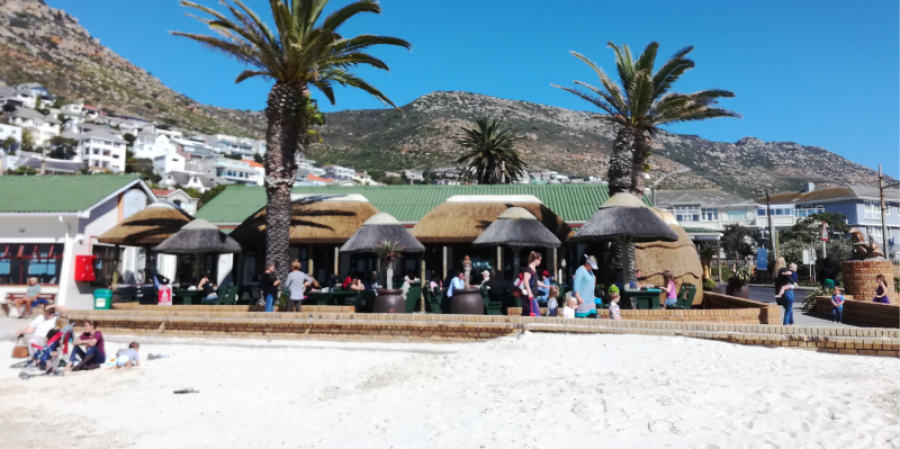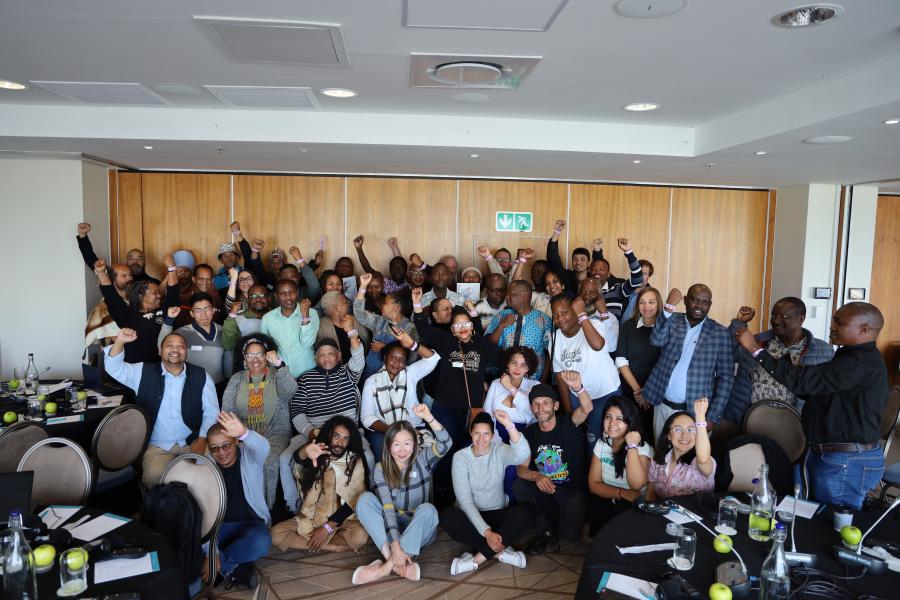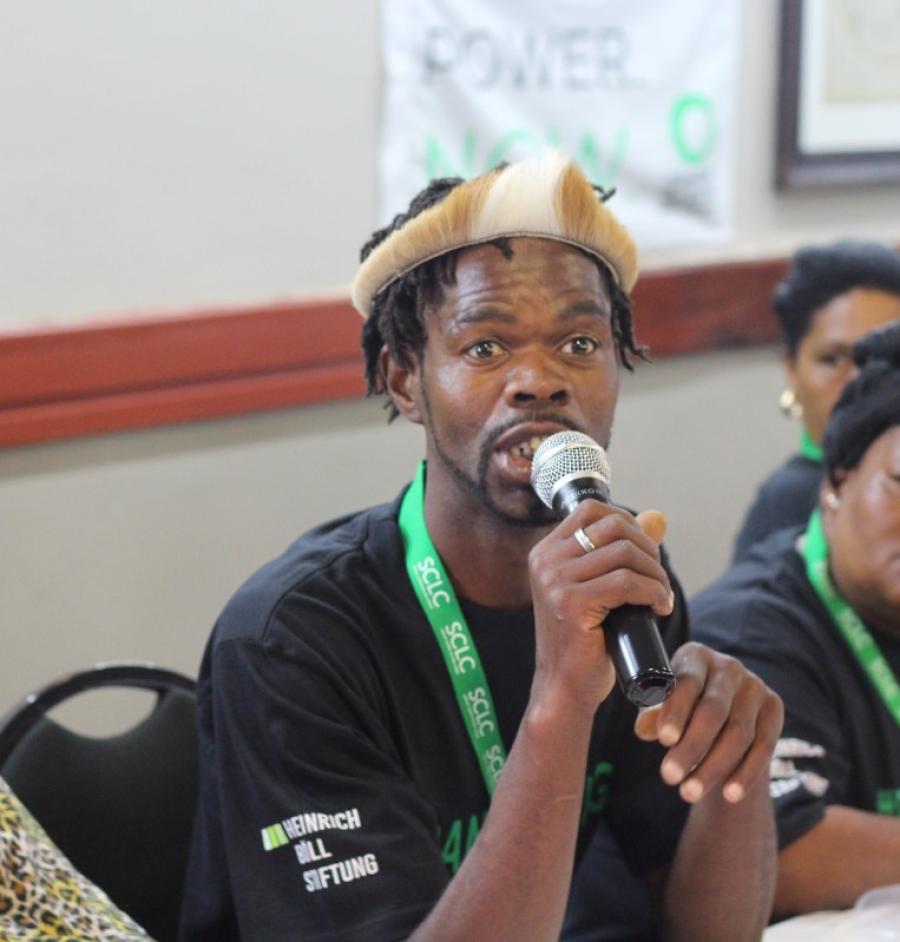South Africa’s Northern Cape, home to the Nama, Griqua, and Cape Khoi peoples, is one of the most biologically diverse flora regions in South Africa, extending in the northwest region of the country from the craggy desert mountains of the Richtersveld to the coastal seascapes of Hondeklipbaai. The local peoples’ ancestors date back to the early San Bushmen. Despite their ingenuity, fortitude, and sense of the outdoors, they have found that the sting of the former apartheid era has left them in a precarious state with few economic opportunities.
These hunter-gatherer descendents realized that their two economic mainstays, mining and agriculture, were lacking sustainability, especially since mine reserves began dwindling and grazing pastures started to show signs of degradation. As the opportunity for free enterprise became more inviting, representatives from local community-based organizations and non-governmental organizations (NGOs) came together and discussed sustainable livelihood alternatives. They acknowledged the discrete advantage of the region as an under-explored tourist destination, especially since few South Africans ventured into this area during apartheid, let alone international visitors attempting to discover this part of the world.
According to former EcoAfrica Environmental Consultant Bernice Maclean, indigenous blacks were not allowed to travel outside of their area during apartheid, so they had little knowledge of tourism. But what appeared initially as a disadvantage has proven advantageous. Focusing on their ancestral heritage and surrounding unspoiled rugged landscapes with their vibrant and distinct ecosystems, association members set their sights on visitors who prefer getting off the beaten path and experiencing a society whose rich culture dates back thousands of years.
Word spread quickly as discussions about ecotourism possibilities continued between the community organizations and NGOs. Eventually the concept for a tourism route sprang out of enormous community interest that spanned a 600-mile corridor. Much of that interest came from isolated community-based tourism companies throughout the region. These companies formed a cooperative in order to be more effective in generating income and conducting sustainable tourism.
Landscapes Revealing Legends, Biodiversity, and Ingenuity
The South-North Tourism Route (SNTR), created in 1999 by the South-North Tourism Working Group, takes visitors on a journey through the eyes of its indigenous people while promoting a balance between environmental and cultural issues. As a result, this hidden treasure, with its physical brilliance and cultural diversity, presents important opportunities to both locals and eco-travelers.
Because the extensive interest in the route required that it be managed carefully, it was informally divided into six sectors along the 600-mile stretch. Two indigenous community residents from each area were selected to administer the route, forming a committee that represented a mix of organizations and businesses.
To ensure that businesses practice environmentally sustainable standards, SNTR Association members—business owners along the route who would benefit from tourism and the committee administrators who represent each area along the route—use South Africa’s White Paper for Sustainable Coastal Development Policy as a guideline. With ongoing education programs held throughout the region, residents are beginning to understand the potential long-term rewards as well as the inevitable negative impact tourism can have on a community.
Members of the SNTR Association took a hard look at what visitors want. “We have a host of guided tours ranging from outdoor adventures and specialist series to study tours. Each one is flexible and can be designed around travelers’ interests,” explains Malinda Boonzaaier, manager of the South-North Tourism Route Association. “We also enjoy catering to independent travelers who prefer to explore the region on their own by providing an array of up-to-date information about the area.”
The little-known coastal town of Hondeklipbaai is an excellent example of how local people along the route are taking steps to improve their economic status through sustainable development and retaining their culture. Hondeklipbaai is one of the best communities from which to watch the southern right whales during their migration. The government’s poverty alleviation funding program made it possible for locals to build a hostel and develop workshops for creating arts and crafts for tourists.
Led by local guides who share their knowledge about wildlife and archaeological sites, travelers trek across the desert lands of the Richtersveld/Rooiberg Conservancy, cycle through the Richtersveld National Park, and canoe down the Orange River. Funded by Conservation International, representatives from Richtersveld community organizations were instrumental in bringing the conservancy into reality. “The purpose of this conservancy is to protect our natural resources but also to develop the tourism opportunities in a sustainable way,” said SNTRA information officer Wilma Cloete. “This area is a big opportunity for us.”
The Kom Rus ‘n Bietjie Guesthouse, located in the town of Eksteenfontin, exemplifies how locals took action into their own hands. After acquiring funding, the local women’s association renovated an old mining shack into a fully equipped self-catering guesthouse situated along the route to the Richtersveld National Park. To ensure that the community directly benefits, the tourism committee and farmer’s association are among the town’s organizations that oversee the facility on behalf of the community. According to Cloete, tourist bookings are increasing every year.
During apartheid, people of color were displaced from their land considered prime real-estate and were relocated onto less desirable land, while their homes were bulldozed and the terrain swept clean for new development. Langa is one such relocated township to which visitors now travel. Built on a landfill outside of Cape Town, this remarkable township is a thriving community with an environmental center well-known throughout the Cape Town area. Tsoga Environmental Centre is highly respected for its innovative problem-solving in overcoming obstacles to create positive environmental attitudes.
“It takes great effort and much determination to work with people both inside and outside of the community on environmental issues, when their struggle to establish a constant grounded home-life is an overwhelming challenge,” said Tsoga Environmental Centre Director Sonwabo Ndandani. “We realize to promote healthy environmental actions we must take an interdisciplinary approach to environmental education. When developing a plan, we must look not only at the environmental issues themselves, but integrate the social, cultural, and economic aspects of the people into the entire picture.”
The environmentally sustainable tourism route stands apart from other ecotourism adventures in two distinct ways. First, while most tourism is in the hands of the large tourism industry, which allows little economic benefit to filter down to the local level, the SNTR is the first community-based tourism cooperative in South Africa to be owned and operated solely by local residents.
Second, as the Route continues to expand, visitors are offered the chance to put their experience and knowledge as an ecotraveler into action. Together with EcoAfrica Environmental Consultancy and Aspects of Life Adventure Company, SNTR members developed a number of “Trial Tours” along the Route. Travelers have the opportunity to provide constructive feedback to local providers and field guides during their tour. This not only improves the quality of the tour for future travelers and benefits local people, but it also gives travelers an inside view into local customs and authentic lifestyles.
Long Distance Communication
Since it is not conducive for SNTR Association members to meet on a regular basis, a variety of workshops are conducted along the route. Members attend classes to improve their business and financial skills, gain computer literacy, and produce quality arts and crafts. Eksteenfontin resident Floors Strauss directs the Training and Support for Resource Management (TRANSFORM) Program that provides technical support for community-based initiatives that link locals to biodiversity conservation. Workshops are also held along the route to address conflict resolution, administrative concerns, and guidelines for further development.
SNTR Association members have found the internet to be an invaluable resource. As a time saver and low-cost communication tool, it allows them to exchange ideas not only by e-mail but also through a popular Web site called the Distance Learning and Information Sharing Tool (DLIST, http://www.dlist.org). Here they can post messages and keep abreast of route activities. DLIST also offers members courses on integrated coastal management and cultural heritage.
A Lasting Future
Land ownership has become one of the most important hurdles for members along the SNTR. When the 1913 Native Land Act went into effect, the apartheid regime dispossessed all indigenous landowners of their land. Currently, ownership is in limbo in these communal areas along the route. Without official ownership, South Africa’s indigenous peoples have no control to curb possible negative effects or mitigate growth impacts from tourism. This lack of control can overflow into outlying communities.
These indigenous people, some who are SNTR members, demand their land rights be reinstated and recently won an important legal action against the government and its diamond mining company Transhex. The company wants to mine the diamonds the Richtersveld residents are literally sitting on. The South African Court recently granted the Richtersveld community the rights to all mineral and other natural resources in the region. Because of the community’s commitment to a sustainable environment, a large portion of the area has been established as a land conservancy.
The goal of the SNTRA’s members is two-fold. They not only hope to retain their dynamic landscape but also create a sustainable and viable economy. They hope that travelers will reflect back upon their experience with “wider eyes” and better understand the cultures of these Nama, Griqua and Cape Khoi people and the landscapes that rest beneath African skies. As South Africa’s first sustainable ecotourism cooperative route, it will be important to follow its progress.
Heather Heaton is currently a doctoral candidate at the University of Idaho in the Department of Resources, Recreation, and Tourism where she is studying ecotourism impacts on rural communities. In 2000-2001, she worked at EcoAfrica Environmental Consultancy in Cape Town, South Africa, where she became involved with the people of the Northern Cape and their efforts toward environmentally sustainable livelihoods.
References and further reading
Boonzaaier, M. (2001). The South North Tourism Route Association and Responsible Tourism Development. Cape Town, South Africa: South-North Tourism Association
Chambers, R. & Odendaal, F. (1996). Aspects of Life: A Natural History of Southern Africa. South Africa: Struik Publications.
de Villiers, M. & Bell, B., Eds. (1999). Insight Guide: South Africa, Third Edition. [city?]: APA Publications GmbH & Co.
Magerman. P. (2002, October). Mining Minerals and Sustainable Development DLIST Discussion.
Peck, D. (2002, October). Key Documents of the Ramsar Convention, The Montreux Record.



